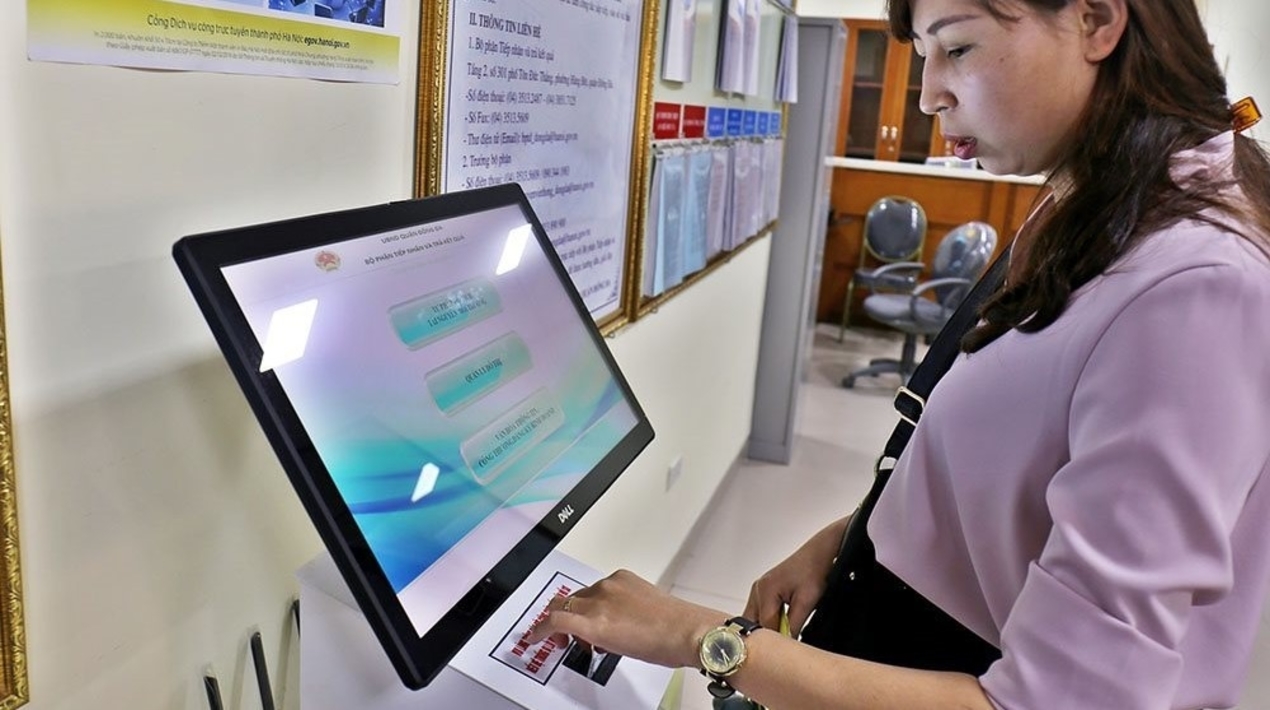
In a bid to improve online public services, several localities in the country have reduced service charges and assigned targets for online document processing. As per a report by the Ministry of Information and Communications (MIC), currently, all ministries, branches, and localities have public service portals. Over 97% of public services that meet MIC requirements are now provided online at level 4, which allows users to fill in and pay for application forms entirely online.
To improve online public service use efficiency and encourage people to use online services, Ho Chi Minh City last year reduced fees by 50% for six kinds of services. Quang Nam has also decided to reduce fees by 50% for eight types of fees and five types of charges for those who settle administrative procedures through levels 3-4 online public services.
The Hoa Binh province in mid-February assigned targets for online document processing to 27 departments, divisions, branches, and People’s Committees of districts and cities. In 2022, the 27 units aim to have an online document processing ratio of 55%. In mid-March, the Khanh Hoa People’s Committee released a decision on level 3-4 online document processing ratios for departments and localities. The targeted ratios are 45-50% for units under the provincial committee, 35-40% for the units under district people’s committees, and 25-30% for units under ward committees.
The five localities with the highest number of online dossiers from January to April were Quang Ninh, Ho Chi Minh City, Lai Chau, Hoa Binh, and Bac Ninh (55.3%-86.8%). The top five localities with the lowest number of dossiers were Quang Tri, Hai Phong, Kon Tum, Bac Kan, and Dak Nong. Ho Chi Minh City, Hoa Binh, Quang Ninh, Ninh Binh, and Bac Giang had the highest proportions of dossiers processed online. On the other hand, the figures were low for the Hung Yen, Dong Nai, Nghe An, Bac Lieu, and Quang Binh provinces (2.72%-5.76%). According to MIC, though initial results have been gained, online public service efficiency remains low, and the number of dossiers processed online is still modest. As of April, the ratio of online processed documents was only 24.89%.
To further improve digital operations, the Deputy Prime Minister recently signed a directive regarding e-government development. Several relevant agencies have been tasked to prepare infrastructure and fulfil cyber security conditions to connect national databases. As OpenGov Asia reported, they have been instructed to use data for the implementation of online public services by December. Ministries and agencies must work to improve the capacity and quality of services and expand connectivity, surveillance, and access control over data transmission networks by September.
Agencies have also been asked to increase efforts for IPv6 adoption, work on information systems, and establish a communal digital technology network. The evaluation of digital government operations and digital transformation progress at agencies and organisations will be conducted annually in December. The agencies are required to devise measures to encourage the use of digital signatures for administrative procedures. The government will also organise training for at least 100,000 civil servants by December to meet personnel demands.
















